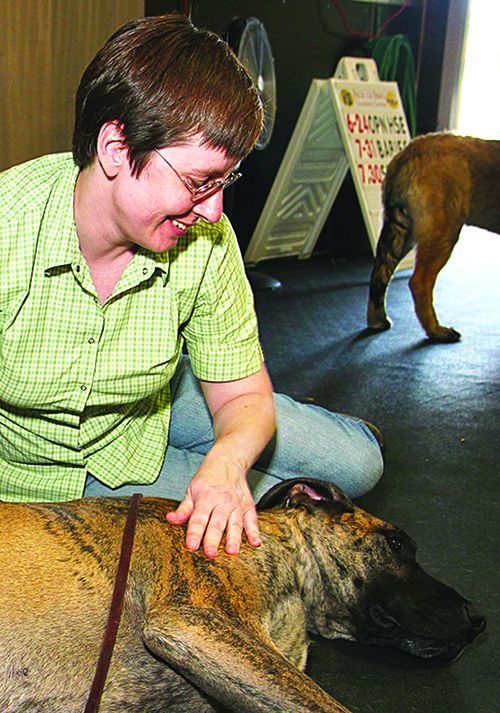When you contact a massage practitioner about your dog, one of the first questions she should ask you is whether and when your dog has been seen by your veterinarian. Be wary of any practitioner who would work on your animal with an illness or injury if you haven’t at least tried to get a medical diagnosis. Because of massage’s powerful pain-relieving effects, doing massage first could delay important medical treatment.
Another thing to watch closely is how the practitioner interacts with your animal. Any attempt to forcibly restrain the dog is a red flag. Massage works closely with the parasympathetic nervous system – the opposite of fight or flight – and anything that counters that relaxation effect will undermine results. Be proactive, and end any session if you feel the practitioner isn’t respecting your dog.
One of my instructors, Lisa Ruthig, told me about a dog she worked on who was prone to behaving aggressively when her neck was touched. The dog had been diagnosed with intervertebral disc disease (IVDD) and was in serious pain. Lisa learned that the dog had been muzzled and forced to endure deep-tissue neck massage from another practitioner.
Lisa used behavioral desensitization coupled with massage to the rest of the body to overcome the dog’s fear. In the end, the dog didn’t need deep tissue massage to relax her tight neck – and deep masssage is contraindicated with IVDD! Instead, Lisa used light massage and myofascial release, which the dog happily accepted. Giving dogs some choice and control over a session is the most humane, fastest way to build a bond of trust and allow the necessary work.







Very good job Lisa. I think you must have deeply knowledge about dogs!
Important to know. Thanks!
This is a very informative article, thanks!
I wish I had read this article before I took my dog to a canine massage booth available at a dog agility trial. It was his first massage. I told the masseuse that my healthy 2-year old pup doesn’t need massage but I simply wanted him to get used to massage. I thought it was going to be a relaxing and enjoyable experience for him since he is social and outgoing and loves being petted by people. However, the massage was so forceful that it made him yelp in pain twice within the first 5 minutes. After the second time he yelped, he jumped off the massage table and tried to run away. Once he realized he couldn’t run, he started jumping up on me, asking for help. The masseuse told me to put him back on the table. Feeling confused about what was happening, I made the mistake of complying to the request. She restrained him once again to continue massage, but he was so frantic trying to get out of her grip that she finally gave up. At this point, she realized the damage she did to him—she told me to come back the next day so she could just rub him and give him treats to countercondition his fear she instilled in him. No thanks! I took him to another masseuse who worked on my older dog before, who gently and patiently worked to regain his trust. I learned my lesson—never trust anyone with your dog unless you thoroughly vet them.